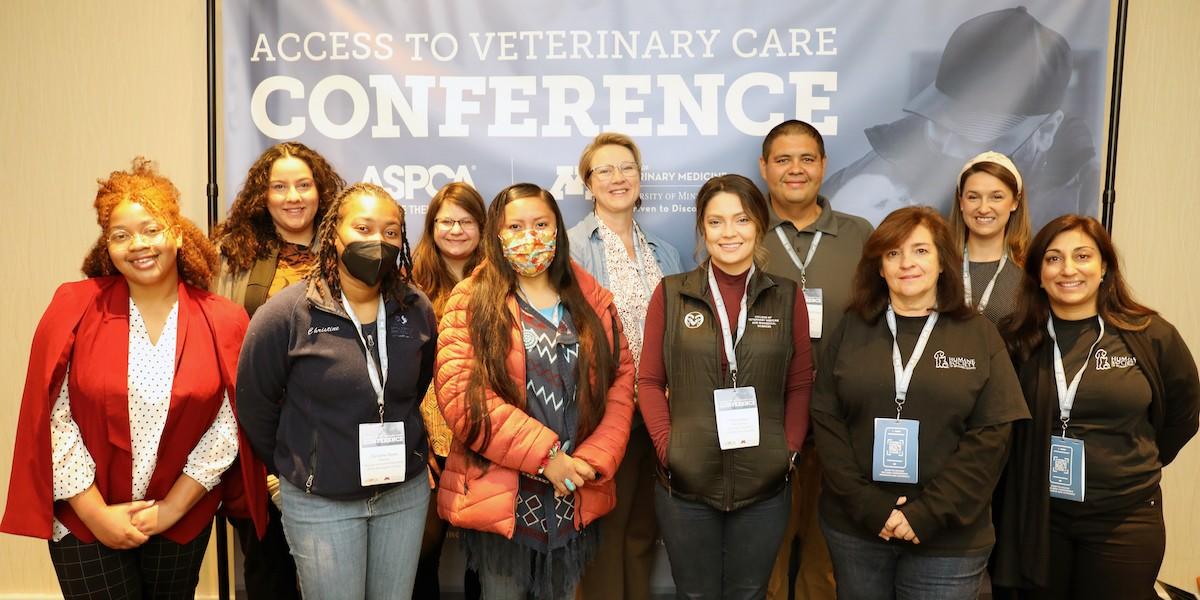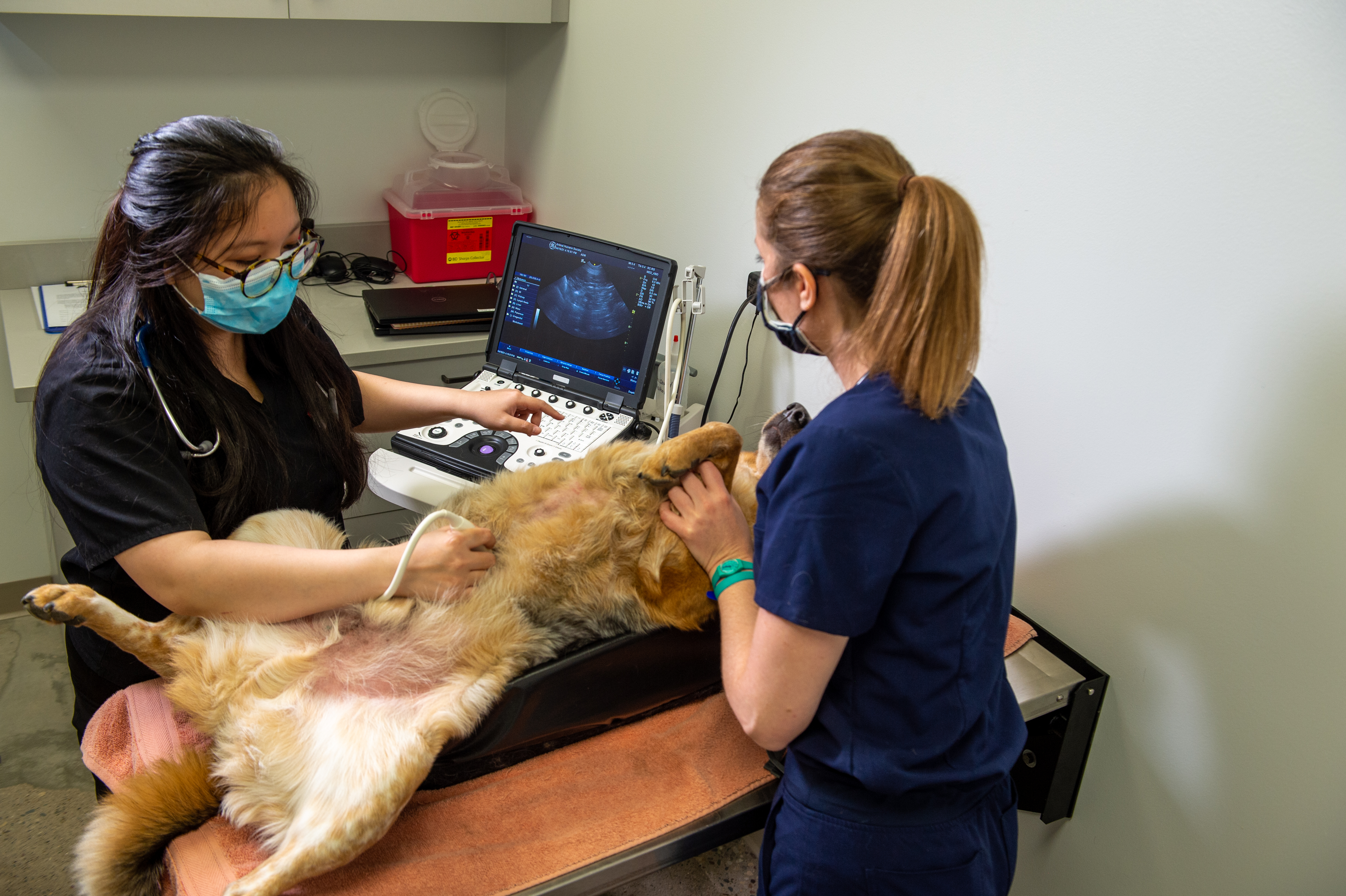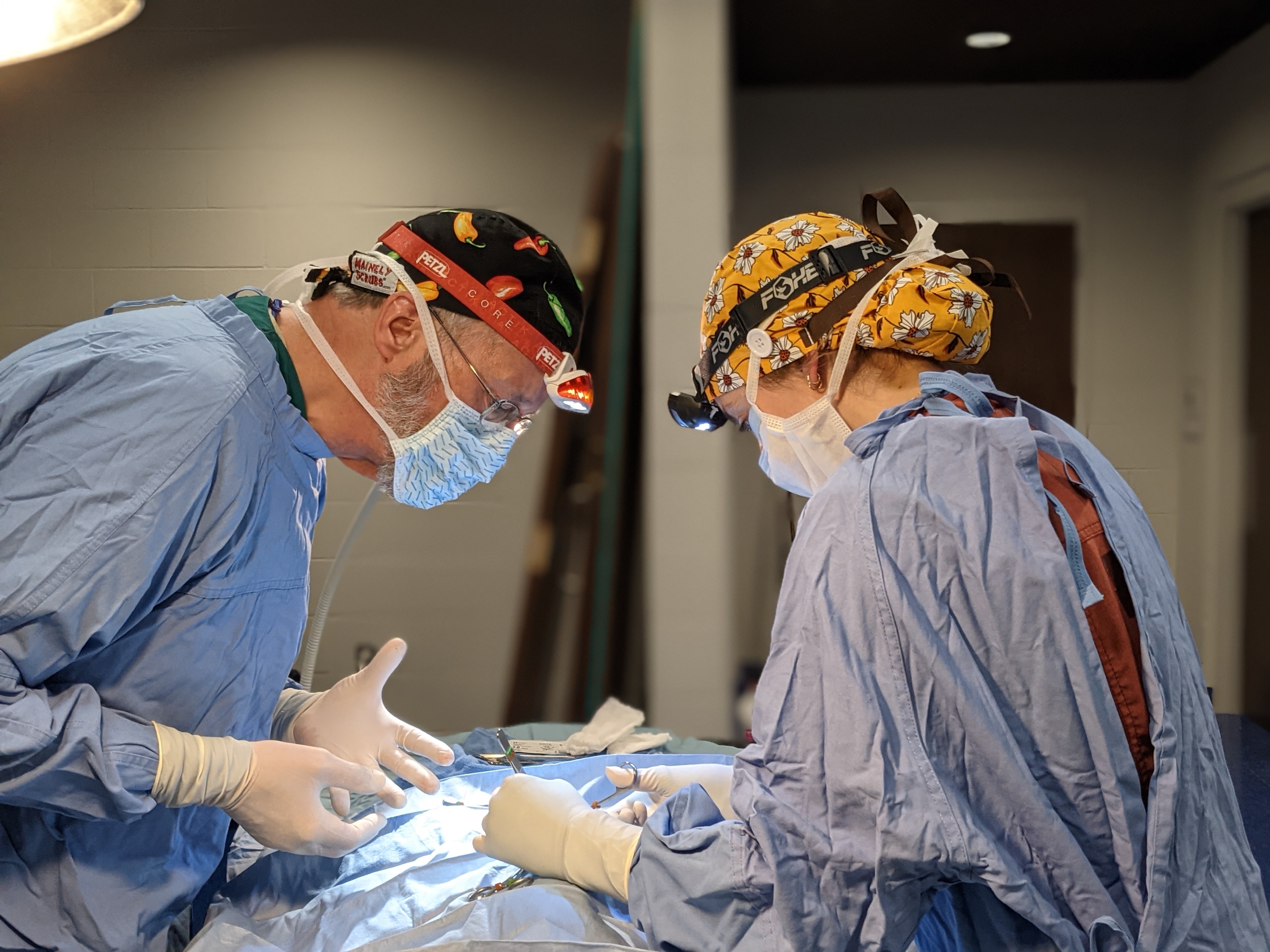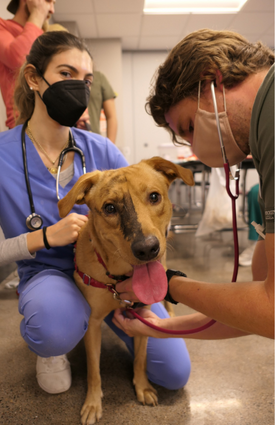Building community
Conference puts spotlight on years of CVM leadership in improving access to veterinary care

Conference puts spotlight on years of CVM leadership in improving access to veterinary care
Recently, the Twin Cities played host to an important veterinary conference and an even bigger conversation on how to break down barriers and improve access to veterinary care in resource-limited and excluded communities.
Hundreds gathered in October 2022 for the first-ever Access to Veterinary Care Conference, which was co-sponsored by the University of Minnesota College of Veterinary Medicine (CVM) and the ASPCA. It featured speakers from veterinary schools and animal care organizations, including CVM faculty, staff, and students who took to the stage to highlight the work and accomplishments of the College’s Community Medicine Initiative.

The Community Medicine Initiative is an innovative model of animal care made possible through partnerships with animal welfare organizations that aims to improve access to small animal veterinary care.
For more than a decade, the program has made a significant impact in the lives of the animals and families it helps as well as the students who deliver the care. It’s also shaping the aspects of veterinary education to better prepare students for providing care in communities that regularly face barriers to accessing veterinary care.
The program includes student groups providing care in local and outstate communities, students participating in clinical training rotations at local nonprofit veterinary clinics, and new didactic coursework for students in their pre-clinical years.
“The community medicine program was developed in response to growing published data about barriers to care and the recognition of gaps in small animal veterinary care access within communities the CVM is already serving,” Dr. Lauren Bernstein, assistant professor of community medicine at the CVM, says. “We have two primary goals for the program. One is to bridge the gap in access to care for pets and pet owners in our own communities. And two is to prepare students to confidently practice along a spectrum of care in various veterinary settings.”

The Access to Veterinary Care Conference provided a platform for CVM speakers to share the successes and innovations the College has experienced in the community medicine space. It also continued a trend of collaboration between veterinary schools to create and bolster experiential learning opportunities in community medicine.
“It’s an important demonstration of how institutions and communities are coming together to share resources and work toward this common goal for the profession, our students, and our patients,” Bernstein says.
The longevity of student-led efforts within the Community Medicine Initiative has been key to its impact and success, according to Bernstein. For more than a decade, the College’s DVM students have been working to increase access to small animal veterinary care through organizations such as Veterinary Treatment Outreach for Urban Community Health (VeTouch) and Student Initiative for Reservation Veterinary Services (SIRVS). Both groups provide low- or no-cost veterinary care through clinics held in partnership with various communities and prioritize building relationships and trust with the families they serve. In turn, the students learn to adapt their communication styles and pet care plans to meet a client’s uniquely personal, socioeconomic, or cultural needs and preferences.

Through the years, the community medicine program’s impact continues to grow through innovative collaboration. For example, a partnership with the Animal Humane Society (AHS) provides an opportunity for fourth-year DVM students to participate in clinical training rotations at two AHS community clinics. Outside the Twin Cities, SIRVS students teamed up with their veterinary peers at Tufts University to launch a veterinary care newsletter in partnership with Red Lake Nation community partners.
Community outreach efforts and programs do exist at other veterinary schools, but CVM is among the first to begin integrating community medicine focused on small animal care into its curriculum across all four years. It’s a necessary step in order to prepare students for the reality they’ll face in the workforce.
Forging a new curriculum comes with a plethora of considerations, including how to measure its impact and assess student success.
“Determining how to assess student learning in these new programs is something that's made us a leader in the spectrum of care and community medicine space,” Bernstein says. “How do we look at the impact of a curriculum that's focused on these topics on new graduates and their preparedness for practice—whether they're going into a career in community medicine or not? What are effective methods of content delivery and how do we meet the evolving needs of our students and, simultaneously, our communities?”

While there are students who will choose to practice veterinary medicine in nonprofit settings after graduation, the community medicine curriculum provides a framework all students can benefit from. It encourages them to think critically about how they can provide care that is right and reasonable for each individual client and pet.
That’s a skill that is becoming more important than ever as pet ownership continues to grow. Across the United States, an estimated 85 million families own pets, accounting for 70 percent of households in the country. In 1988, that percentage of households was 56 percent.
A survey by the Access to Veterinary Care Coalition estimates one in four pet owners experiences barriers to obtaining veterinary care—the biggest challenge of which is finances. Other barriers include a lack of transportation and a lack of providers who speak the owner’s language. These financial, geographic, and cultural factors are part of larger systems that leave communities underserved and even excluded in terms of access to veterinary care.
“It’s important to teach veterinary students this because all of these systemic issues— where people get their information, whether they have transportation to a veterinary clinic, what they believe about pet care, what they know about veterinary care, how they feel about their animals, and what their animals provide for them through the human-animal bond—all of those things affect the care that we're able to provide,” Bernstein says.
The 2022-2023 school year marks the 75th anniversary of the University of Minnesota College of Veterinary Medicine.
Join us as we revisit milestones and innovations in the College's history and look forward to our future success in advancing veterinary medicine through teaching, research, and service.